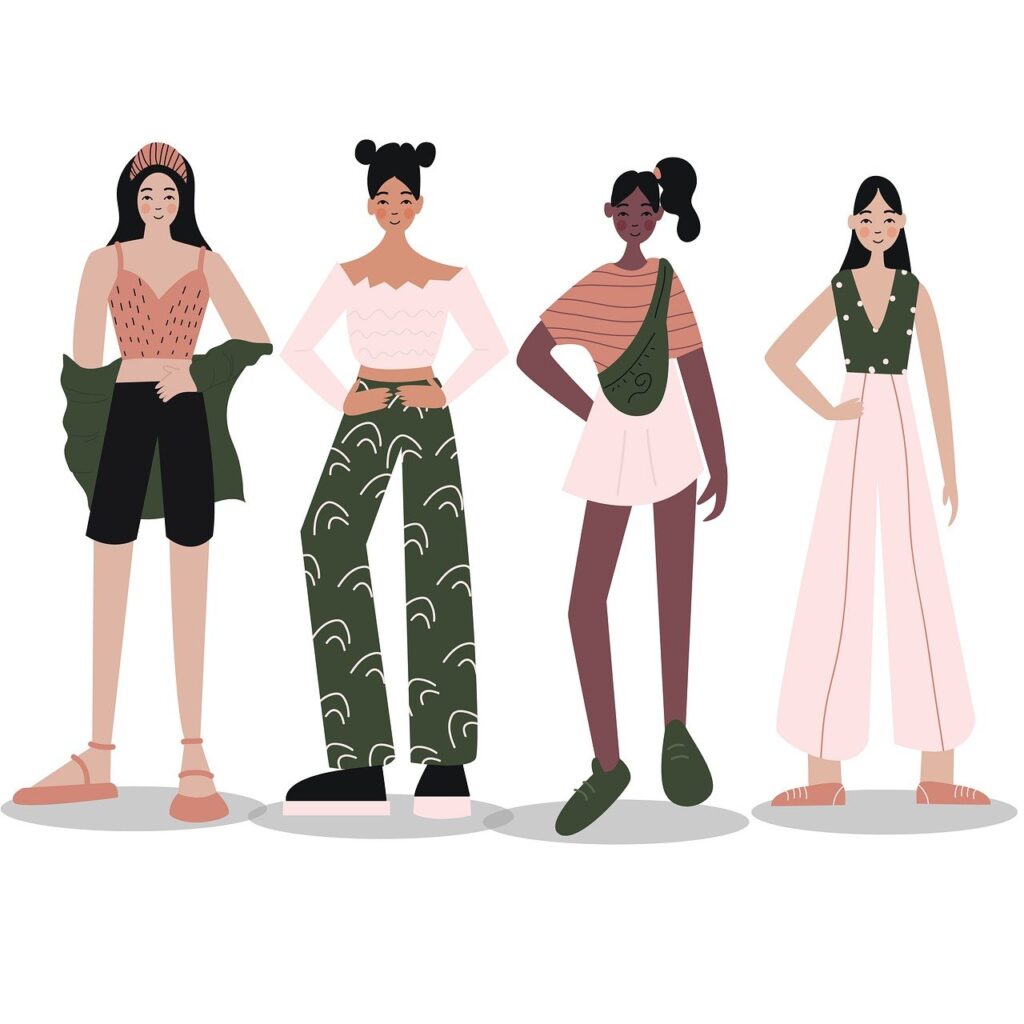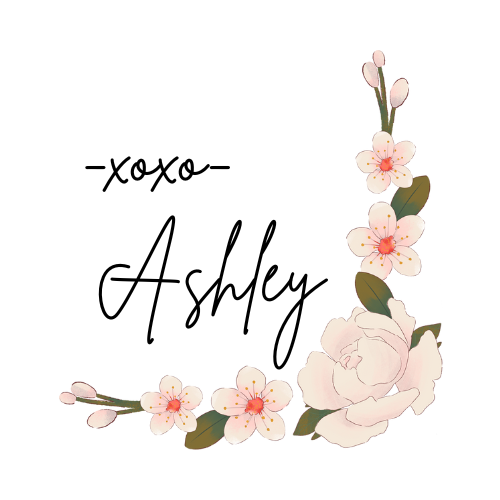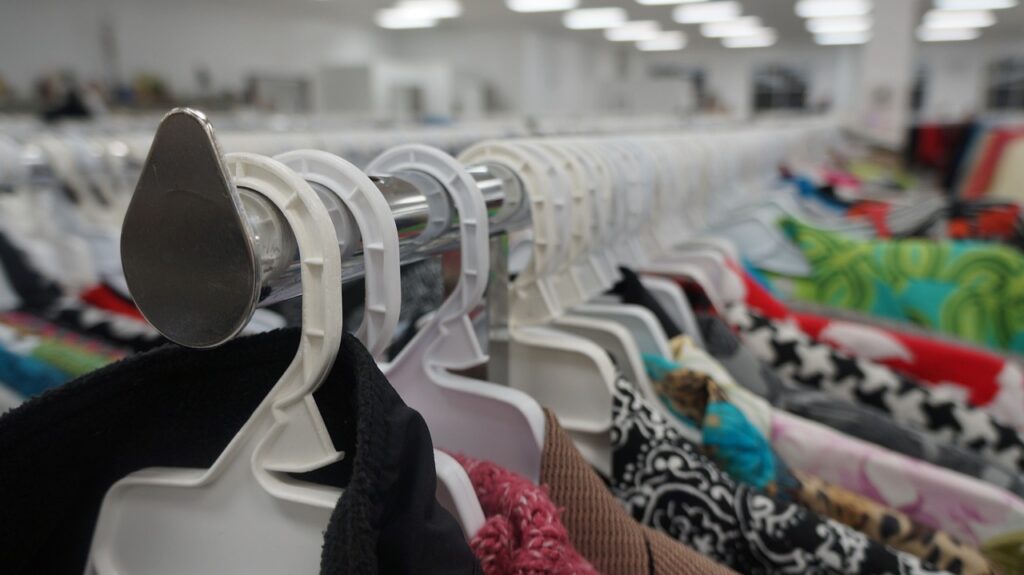In a rapidly changing world, the importance of adopting sustainable, environmentally beneficial practices is becoming increasingly more necessary for the continued survival of our way of life, as well as the planet. Sustainable fashion is the melding of eco-friendly materials, ethical treatment of its employees, and environmentally conscious manufacturing and distribution practices.

Sustainable Spring Fashion
Thrifting is more than just a hobby for me. It’s me doing my part in living more sustainably. With the shifts and closings of big named fabric stores, such as Joann’s, people are wondering what will happen to the home sewists and makers. Times are changing. The world is shifting away from mindless consumption and more focus is being put on sustainable practices and business models. There is a solution if you are willing to think outside the box, and that solution is shopping second hand.
Fast Fashion at a Glance
Fast fashion might be trendy and affordable, but its true cost runs much deeper. The industry is responsible for around 10% of global carbon emissions and uses a staggering 93 billion cubic meters of water annually—just one pair of jeans takes over 3,700 liters to produce. On top of that, 92 million tons of textile waste end up in landfills each year, fueling an endless cycle of consumption and disposal. Behind the seams, many garment workers—most of them women—earn as little as $32 per month, far from a living wage. With 93% of brands failing to pay fair wages, the fast fashion machine thrives on overproduction, environmental damage, and worker exploitation—making mindful, sustainable choices more important than ever.
3 Principles for Sustainable Fashion
Ethical Sourcing
The first, and in my opinion, the most important, is the sourcing of materials. A question to ask yourself when out shopping for wardrobe pieces can be, “Is this a sustainable fabric, such as organic cotton or other natural fabrics?”
Most synthetic fabrics—like polyester, nylon, and acrylic—are actually made from plastic, meaning they don’t break down naturally and can linger in the environment for hundreds of years. Every wash releases tiny microplastics into our water systems, which then make their way into oceans, harming marine life and even showing up in our food and drinking water. Shockingly, 35% of all microplastics in the ocean come from synthetic fabrics alone. So while these materials might be convenient and budget-friendly, their impact on the planet lasts far longer than the latest fashion trend.
Less is More
The second principle to remember is less is more. A capsule wardrobe is all about curating a closet with intention, choosing versatile, high-quality pieces that mix and match effortlessly. Instead of chasing trends, it focuses on timeless staples—classic silhouettes, neutral basics, and a few statement pieces that truly reflect your style. This approach makes getting dressed simpler and more joyful, while also cutting down on clutter and overconsumption. By investing in fewer but better pieces, you’re not only creating a wardrobe that works for your lifestyle but also making a more sustainable choice for the planet. It’s about embracing quality over quantity and feeling good in what you wear—without the constant pressure to keep up. ✨
Slow Fashion for the Win
As you refresh your wardrobe for spring, embracing the principles of slow fashion can help you shop more intentionally and sustainably. Slow fashion encourages choosing quality over quantity, opting for well-made, timeless pieces that will last beyond just one season. Instead of impulse-buying trendy items, focus on versatile staples—like airy linen tops, flowy dresses, and classic denim—that can be mixed and matched effortlessly. Shopping secondhand, supporting ethical brands, or simply restyling what you already own are all ways to reduce waste while still feeling fresh and renewed for the season. By slowing down and making more mindful choices, you create a wardrobe that not only looks good but also aligns with your values. 🌿✨
Eco-friendly Practices for Sustainable Spring Fashion
Embracing sustainable fashion doesn’t mean sacrificing style—it’s all about getting creative and making more mindful choices. Upcycling and thrifting are great ways to refresh your wardrobe while reducing textile waste, whether it’s by repurposing old clothing into something new or shopping secondhand to give pre-loved pieces a second life. Another way to make a difference is by supporting sustainable brands that prioritize ethical production and eco-friendly materials. Taking time to research and identify brands with transparent, responsible practices ensures that your purchases align with your values. If you’re feeling crafty, DIY fashion projects—like simple clothing alterations or customizations—offer a fun and personal way to refresh your wardrobe. Learning basic sewing skills and upcycling techniques can turn forgotten pieces into unique staples, proving that sustainability and style can go hand in hand. ✨♻️
The Future of Fashion is Green
As we welcome the refreshing energy of spring, it’s a beautiful moment to reflect on the significance of sustainable fashion. With each season, the impact of our fashion choices on the environment becomes more apparent, and spring offers the perfect opportunity to embrace eco-friendly practices.
By choosing thoughtfully crafted pieces, we can not only celebrate the season’s vibrant colors but also help reduce waste and support ethical production. I encourage you to explore ways to make mindful fashion choices—whether it’s swapping out fast fashion habits for timeless, durable pieces or supporting brands that prioritize sustainability.
The future of fashion is undeniably shifting toward a more conscious approach, and as we continue to embrace sustainability, we’ll see a positive ripple effect across the entire industry. Let’s be part of that change together!
Share your favorite sustainable fashion finds or styling tips in the comments, and let’s inspire each other to build a wardrobe that’s both beautiful and kind to the planet.


